
For years, email marketing has been a cornerstone of digital marketing strategies. It’s been continually evolving and the latest game-changer is dynamic email content. In fact, 55% of marketers are now prioritizing personalization in their email campaigns
Today, dropping someone’s name in the subject line or sending them a colorful newsletter every week is old news. If you want to set yourself apart from the competition, you must start thinking about dynamic content.
When leveraged correctly, this technique will help you surprise customers, provide them with relevant content, and, ultimately, boost engagement.
How do you go about creating dynamic emails? And how do you ensure you’re getting results from this strategy?
In this article, we’ll explore what dynamic email is and how you can leverage it to boost your marketing efforts.
What Is Dynamic Content in Email Marketing?
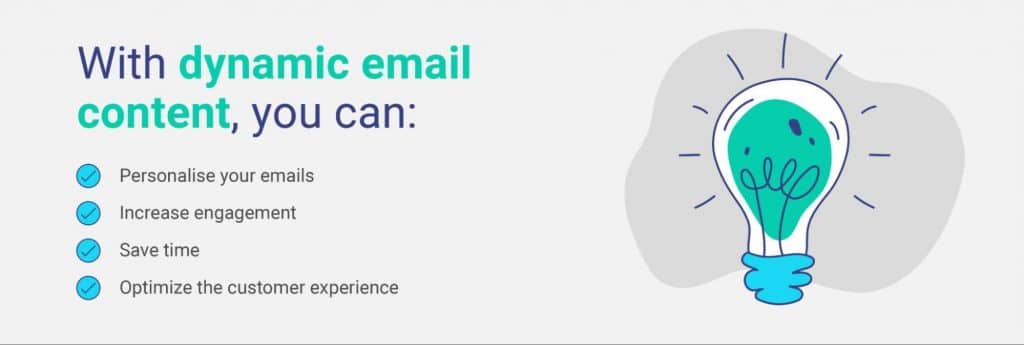
“Dynamic” usually means something that keeps changing—as opposed to something “static” that remains the same—and dynamic email is no different.
Email-dynamic content in email marketing is a type of content you can adapt to almost anything, whether it is buyers’ interests, purchasing habits, location, or even current context.
Instead of sending the same emails to all your customers all the time, with dynamic content you’re always looking for ways to change your emails to be more relevant.
You can also customize different elements of said email—subject lines, text, images, videos, etc.
So, good use of dynamic content would be sending an email that showcases your latest sneaker collection to a customer with a history of only purchasing sneakers from your online sports store.
Another example would be sending an email with ideas for Valentine’s Day gifts to a male member of your audience a few days before February 14th.
And—as you might have guessed—personalized emails get better results compared to regular old template emails.
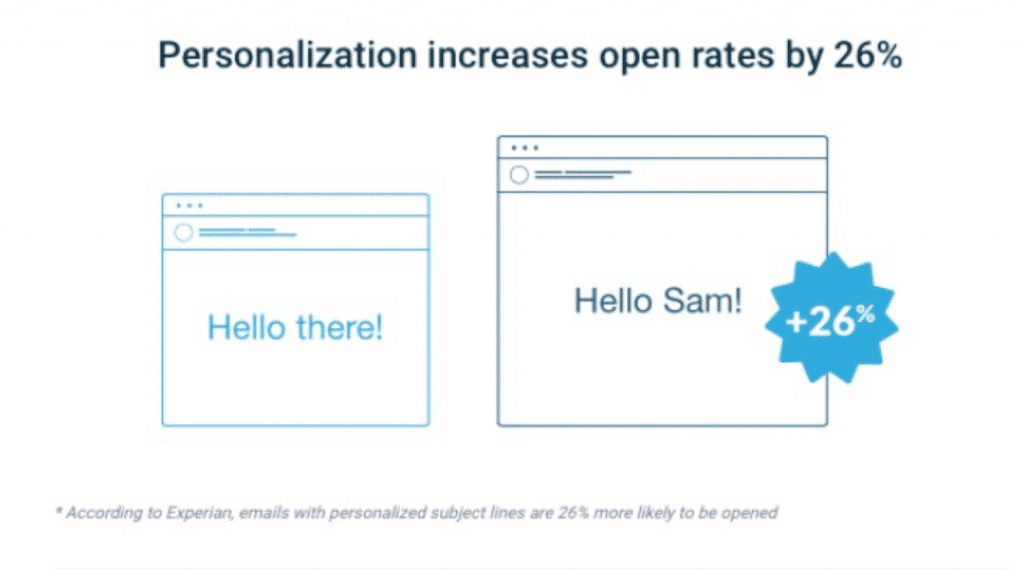
What Are the Benefits of Using Dynamic Emails?
Dynamic content and relevant offers are why some emails hit the mark while others get ignored.
Here are the top benefits of using dynamic content in your email marketing strategy.
⬆️ Personalization: Dynamic email content transforms your messaging by tailoring it to align with each recipient’s unique characteristics and behavior.
It’s all about making your outreach feel personal and meaningful. And, your audience is yearning for it—72% of consumers insist they engage only with content crafted specifically to their interests.
⬆️ Increased engagement: By sending content tailored to your subscriber’s interests and behaviors, you will likely see increased open rates, click-through rates, and overall engagement.
⬆️ Improved customer experience: Dynamic email messages show your customers that you understand their needs and interests, which can enhance their perception of your brand and improve their overall experience.
⬆️ Boosts conversion rates: When people see content relevant to their interests, they are more likely to take a desired action, whether it’s purchasing, signing up for a webinar, or downloading a resource.
⬆️ Time efficient: With dynamic content blocks, you can create one template that adapts to your different audience segments, which saves you time compared to drafting multiple individualized emails.
The other benefit is that you can share exclusive content with different customer segments across multiple campaigns. For instance, loyal customers can be rewarded with exclusive email coupons, while those who subscribe to a paid newsletter can enjoy bonus content.
⬆️ Advanced segmentation: Dynamic content allows for segmentation based on various factors (behavior, location, past purchases, etc.), which enables you to target your audience more accurately and provide them with a highly personalized shopping experience.
What Information Can You Personalize?

Now, let’s say you’re sold on dynamic email marketing. What are some things you can personalize?
Here are some ideas that you can use relatively easily.
Personalize based on demographics
Email marketers use a wide range of demographic information to create content tailored to specific audiences.
Here are some of the different types of demographic data you can collect:
✔️ Age
✔️ Gender
✔️ Interests
✔️ Geographic location
✔️ Language
✔️ Type of device and operating system
Different demographics will want to see customized content. For instance, say you publish an online fashion newsletter and your website activity shows that a large portion of your audience is females aged 25-34 from New York interested in sustainability.
You can then tailor an email campaign that spotlights your sustainably-sourced fashion line with styles trending in NYC.
Personalize based on purchases
On the other hand, you might have a 50-year-old customer that just loves Yeezys. This example implies that you can use purchase insights to see which customers buy which products to target those customers with your dynamic email content.
Personalize based on email data
Personalizing based on purchases entails tailoring email content to align with a customer’s past buying behavior. By analyzing their purchase history, you can provide highly personalized experiences that resonate with their interests and needs.
Say a customer frequently buys mystery novels from your online store—this means you can send them emails that spotlight new mystery releases.
Also, leverage this subscriber data for cross-selling or upselling. After a camera purchase, suggest related items like lenses, tripods, or a more advanced camera. Such tailored emails can enhance customer engagement, satisfaction, and loyalty.
Personalize based on the stage in the funnel
Using an e-commerce sales funnel to deliver personalized messages can also be a good way to tailor your content to the users’ needs.
You can tell where people are in their customer journey by simply tracking customers’ interactions with your brand. You can send a personalized email with targeted content at the right time by using this data.
So, let’s see the crucial steps you need to take in your dynamic email marketing journey!
Step 1: Gather User Data

Creating personalized marketing messages all starts with gathering customer data. You can’t tailor content to your customers if you don’t know who those customers are. Below we discuss a few ways to gather user data.
Social media platforms
An easy way to gather this type of data is by using the free analytics tools you have at your disposal.
On social media, this is easy—you can simply navigate to your Insights tab on Facebook or Instagram, and you’ll see the demographical data of your followers.
Website analytics
You’re missing out if you’re not already using Google Analytics and social media insights to inform your decisions and learn more about your audience.
Use tools like Google Analytics to monitor user behavior on your website, such as pages visited, time spent on pages, links clicked, and items purchased.
On Google Analytics, you need to take a few steps:
1️⃣ Adjust Data Collection Setting: Once you’ve signed into your Google Analytics account, you will be directed to the home screen. First, enable your remarketing and reporting features. There is a good guide on how to do that here.
2️⃣ Enable Demographics and Interests Reports: You will see a screen that tells you to enable the Demographics and Interests Reports. Click on the blue button that says “Enable.” If you don’t see this button, it may mean that these reports have already been enabled.
3️⃣ Go to Audience Reports: From here, open “Reports,” select “Audience” from the left-side menu, and then go to ”Demographics and Interests.”
⚠️ Stuck? Here is a guide on how to do that.
Here is how the Interests page looks:
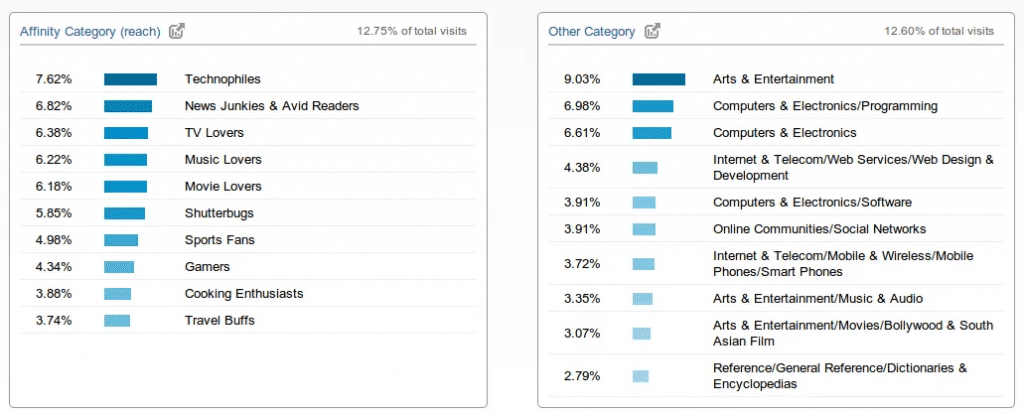
4️⃣ Update Privacy Policy: Once you’ve enabled the Demographics and Interests Reports, you need to ensure your privacy policy reflects this change. It must provide a clear indication that you use cookies to collect data. You must also disclose the use of Google Analytics and its features.
Customer surveys
Conduct customer surveys to gather more specific information about their preferences, behaviors, and needs.
You can utilize customer surveys to gather data for dynamic email content in a few different ways:
✔️ Embed surveys in emails
✔️ Post-purchase surveys
✔️ Website surveys
✔️ Net Promoter Score (NPS) surveys
✔️ Subscription forms
🚀Pro-tip: Other approaches to gathering user data
➡️ Sign-up forms: Collect information directly from users when they sign up to your website, newsletter, or service. Ask for details like name, location, age, and interests.
➡️ Email interactions: Monitor which emails they open, which links they click on, and which offers they redeem to understand their interests better.
Collect all of this data and then create email lists that gather similar customer profiles in one place.
Step 2: Gather Behavioral and Engagement Data
The more important data set is behavioral and engagement data—it tells you who your customers are and how they interact with your brand.
Both behavioral and engagement data can be collected through multiple channels and are used to help you create personalized emails.
Tracking pixels
The most obvious place to collect behavioral data is from your website. Which users visit which pages? Which product categories are they interested in? Which products have they already put in their shopping carts?
Answers to all of these questions can help you create better email campaigns. You can use tracking pixels. Installing them on your website is easy. They allow you to gather data on which customers are visiting pages so you can target those users with tailored content.
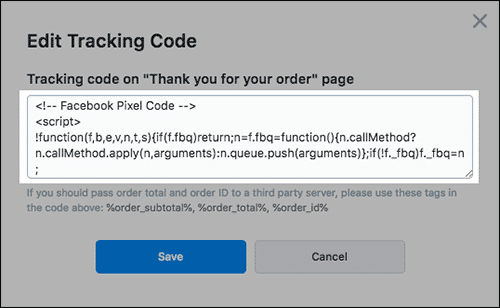
Purchase history
You can also use data from your transactions to see which products each customer is purchasing.
Most CRM tools allow you to track and use this data to inform your campaigns. This data can tell you which products are the most popular, how often a particular customer makes purchases, what their budget is, and more.
Heatmapping tools
Finally, you can gather engagement data with heat mapping tools. These tools give you a visual overview of how your website visitors behave on a landing page—which buttons they click on, which sections they read, etc. The data is easy to read and very informative!
By collecting all these types of data, you’ll take your list building to the next level and create audience groups ready to receive highly personalized content.
Step 3: Deliver Dynamic Email Content
In the sections above, we have explored dynamic email content and how you can collect information on subscriber behavior. Now, the million-dollar question—how do you create this content?
Here are some ideas on how you can use personalization in different ways. These are some great examples from brands that understand how to create tailored email marketing campaigns that not only use customer data, but contextual data as well.
🔥 Use the weather to provide contextual content
Some smart brands that want to take their personalization efforts to the next level use ad-hoc things like the weather to customize their campaigns.
This requires being quick on your feet and reacting to sudden changes—if you do it properly, the response can be amazing.
Here is how Brooks, a running gear brand, executed their email strategy by using the current weather:
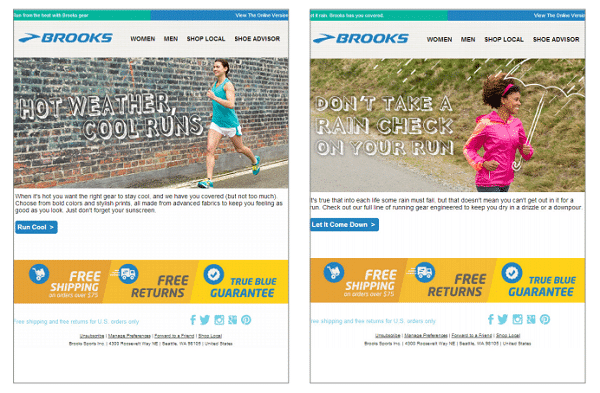
They capitalized on different weather conditions by changeing everything: the text, copy, and image itself. Notice how the models wear different apparel ideally suited to the weather conditions!
🔥 Re-engage old customers
As we mentioned, you can always target users with different content based on where they are in the sales funnel.
Customers with only a superficial knowledge of your brand might get an email listing your most popular products. Then, you separately target customers who have put a product in their cart but quit the purchasing process with an email that contains a discount.
And, for customers who have already made a purchase but haven’t returned again, you can create a unique message geared toward trying to get them back.
St. Jude’s Children’s Research Hospital does this very effectively:

They evoke emotion in their image and body copy, which works perfectly for the brand.
🔥 Combine multiple data points
This following dynamic email template shows how you can use multiple data points to send your audience-tailored emails.
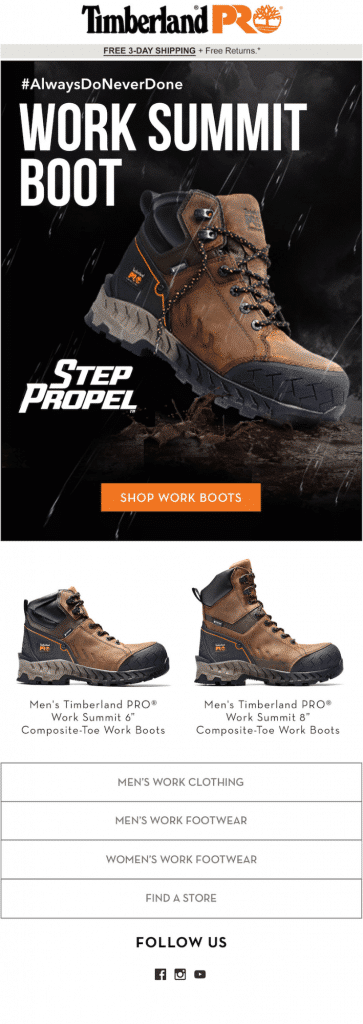
By examining this newsletter, you can tell three things: it’s intended for men, it targets a particular profession, and it was likely sent during the rainy season.
When you combine demographical, behavioral, and contextual data, you can create a powerful message that will likely increase your chances of getting conversions.
Step 4: Use Advanced Content Personalization
If you want to take things even further and capitalize on personalization to the fullest, you might want to personalize the content of the email itself—not just the offer.
Here at Hyperise, we call that hyper-personalization. It’s a technique that uses customer data—such as their name, occupation, job title, profile picture, location, or other data points—to send smart messages that leverage this method of advanced personalization.
This approach can be particularly effective in B2B sales, where each lead needs to be approached on a case-to-case basis. Hyper-personalization is a great tool to help create deep relationships and show your prospects how seriously you take your job.
Here is how it looks when applied to LinkedIn outreach:

As you can see, we used multiple methods to create a tailored message.
We addressed each user by name, mentioned their occupation, highlighted our common interests, and topped everything off with a personalized image. You can’t get any more personal than that, right?
Wrong—you can! Hyperise also allows you to, for example, include a map with your prospect’s location pinned. You can also include their profile image or company logo anywhere in the message.
So, instead of saying, “Elon, here is what our tool can do for your company,” you can say, “Elon, here is what our tool can do for Tesla.”
The difference is that the level of connection is obvious—and it will also be obvious to your customers.
Personalization in action: G2
Software user review and rating website G2 used Hyperise to help their prospects visualize what their brand could look like on its website.
Each prospect was sent an email showing their logo alongside those of other massive brands in G2’s reviews and reports. This helped the prospect understand the exposure they could get from working with the company.
Instead of sending each prospect a different email design, G2 created a single template, which included dynamic elements that automatically adapted to the individual recipient.
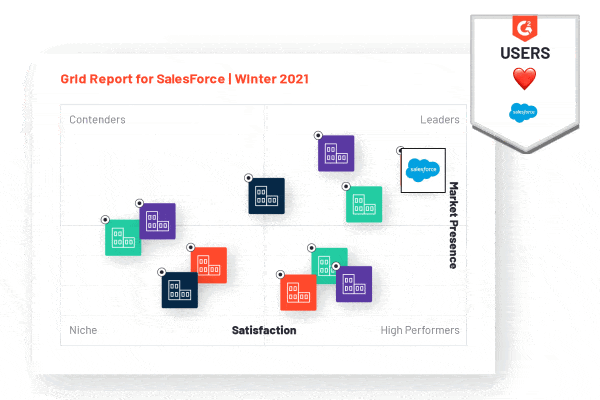
As a result, G2 increased its email campaign response rate from 15% to 48%.
Step 5: Track Your Metrics
The final step in every digital marketing strategy is to track KPIs. Even though this typically occurs after everything has been prepared and the campaign was launched, this step should be among your highest priorities.
It’s the only way to tell whether your dynamic content is working.
Here are some important KPIs you should monitor:
🔶 Email open rate
This metric tells you which percentage of your recipients are opening your emails. It’s a good indicator of how effectively you’re targeting customers and how compelling your subject lines are.
ℹ️ Campaign monitor suggests that in 2023, a good email open rate is somewhere between 17-28%.
🔶 Click-through rate
This tells you which percentage of people who received your email clicked on at least one link. Unlike the previous KPI, this one tells you more about the content of the email. If your click-through rates are low, you should work on your CTAs, targeting, or offer.
ℹ️ Mail Chimp suggests that—depending on your industry—an optimal click-through rate is around 3%.
🔶 Conversion rate
This is the percentage of recipients who completed an action you defined as a conversion (buying a product, filling in a form, downloading a PDF, or another desired action).
Consistently high conversion rates mean that your whole process is stellar—from your targeting, through your messaging, to your website experience and offer.
ℹ️ There isn’t a ‘correct’ answer in terms of what the ideal conversion rate is. Generally, a 2-5% conversion rate is good. However, the best thing to do is to view anything higher than your current conversion rate as better and always aim to improve it.
Dynamic Content in Email Marketing: The Conclusion
So, what is dynamic email marketing? It’s much more than flashy content and cheap personalization techniques.
It’s a complex approach that leverages user data and good email marketing practices to deliver the business using it the best customer experiences and results.
And, like many things in digital marketing, it’s driven by outcomes and constant improvement.
If you feel it’s time to start infusing your emails with dynamic content, check out Hyperise. Its intuitive interface allows you to execute the most impressive customization sequences—without coding experience required!
Register for a free trial now and try Hyperise out for 14 days!